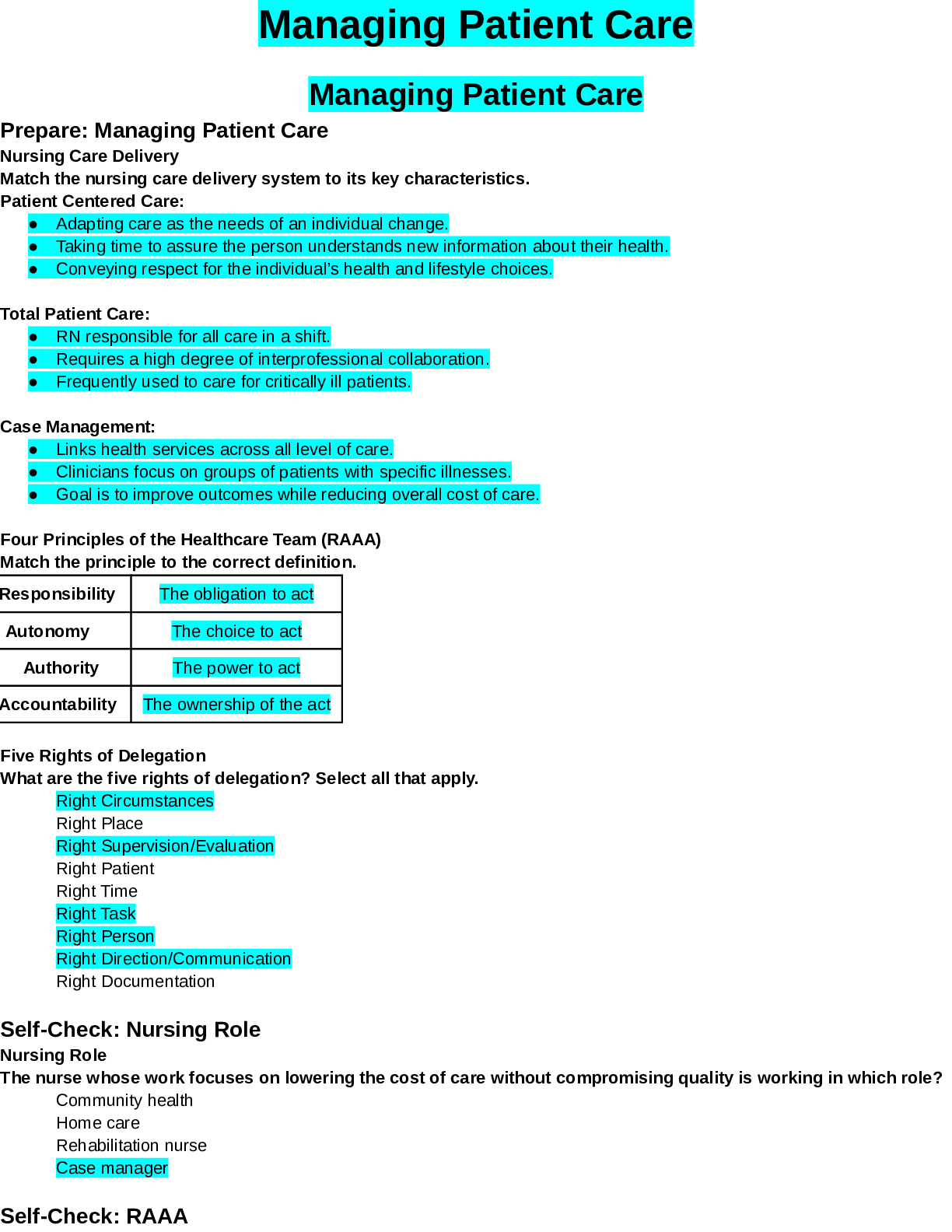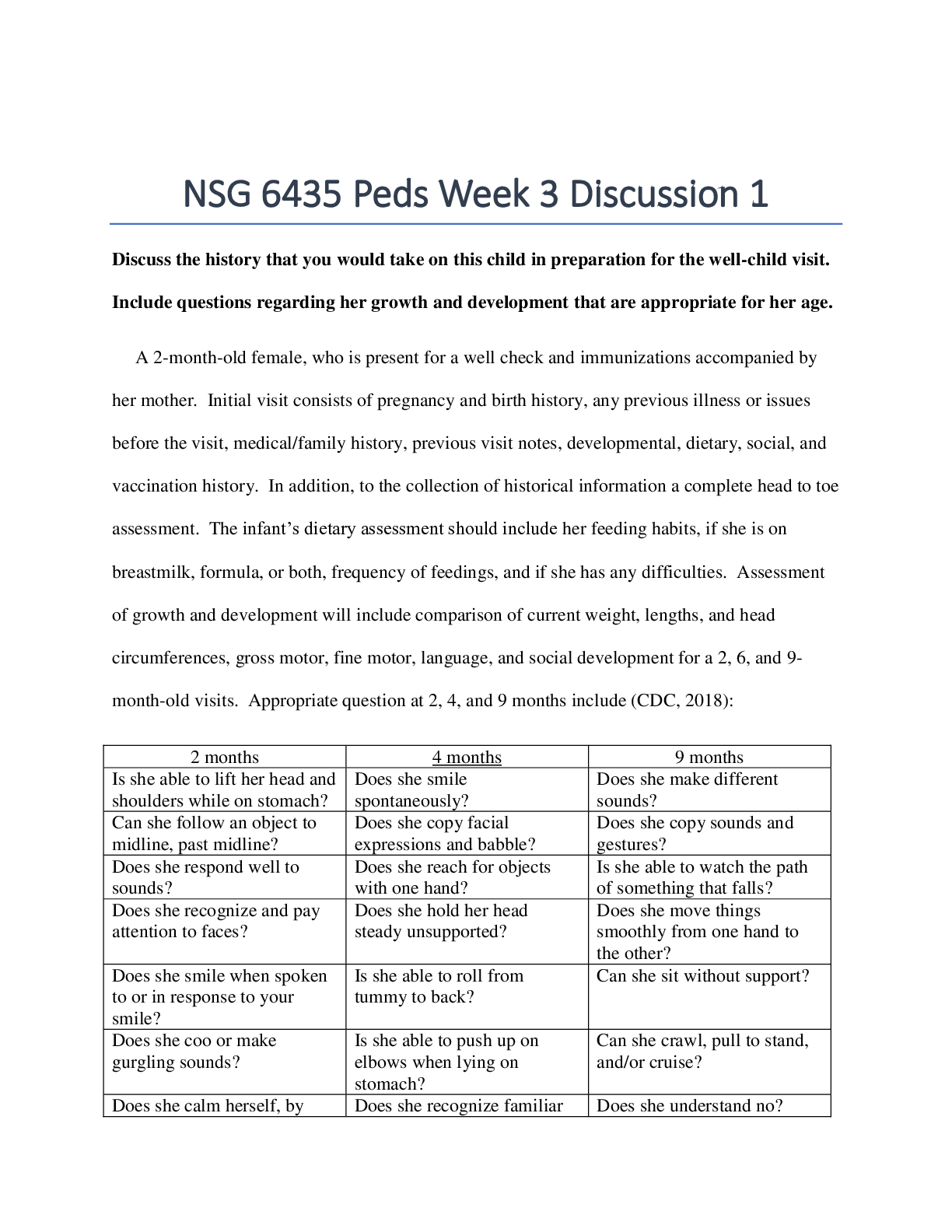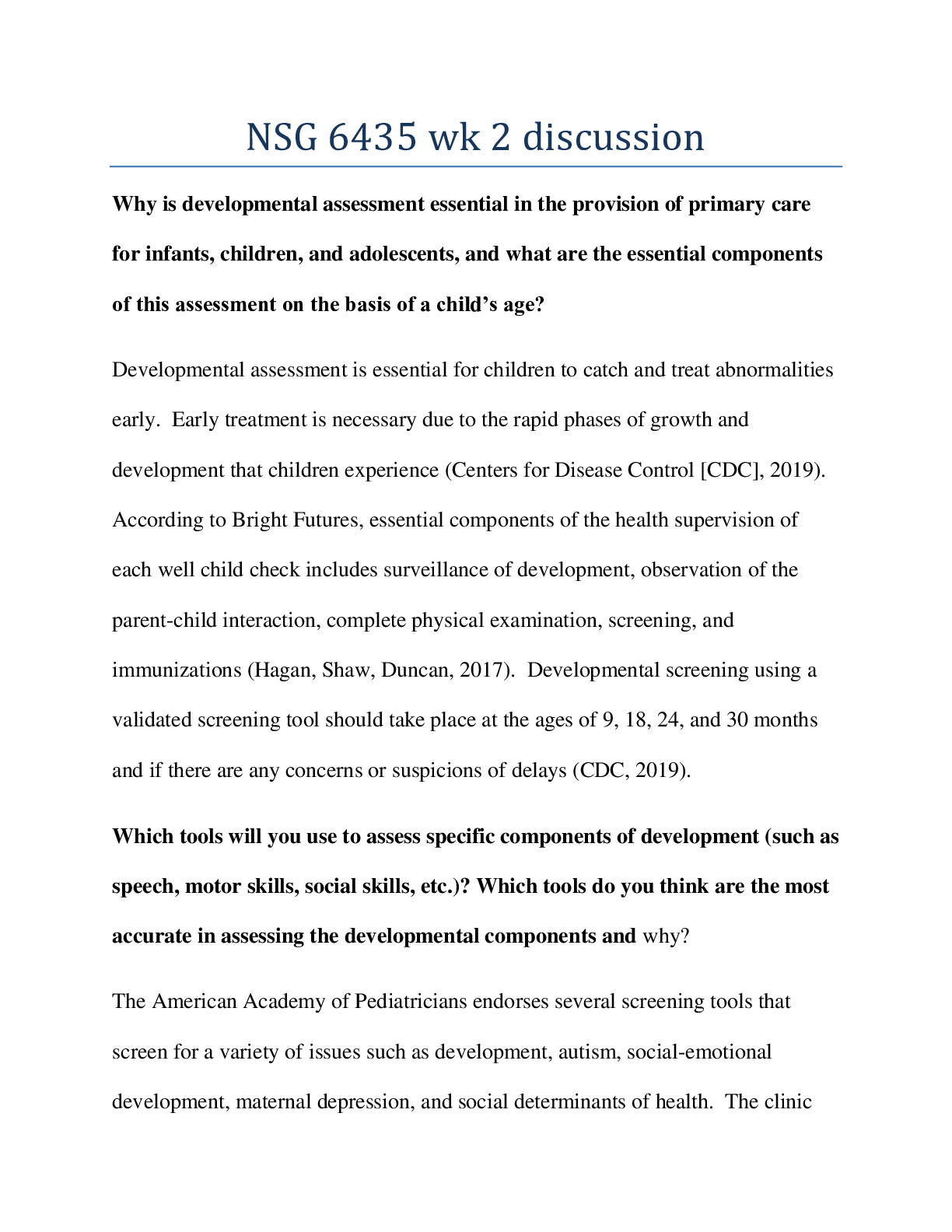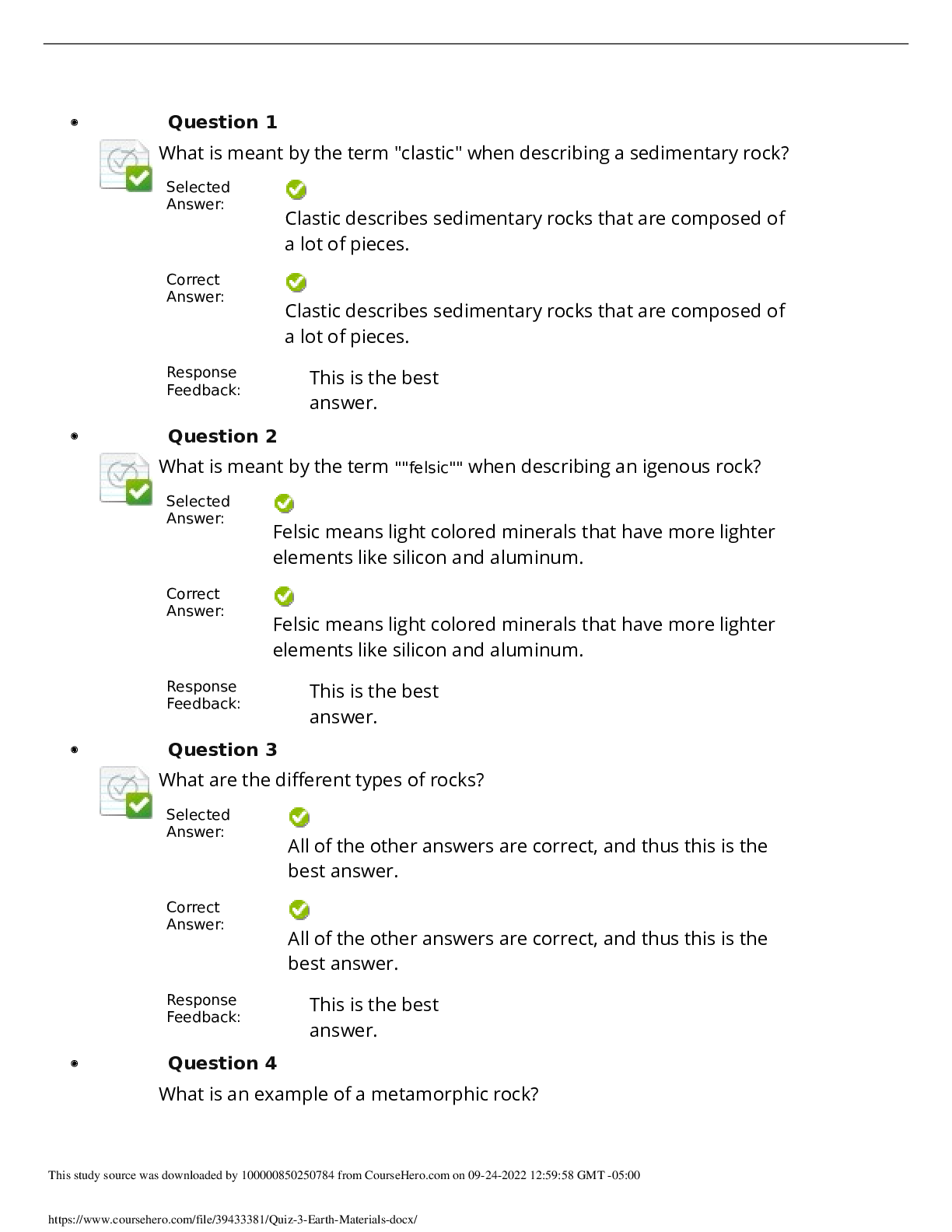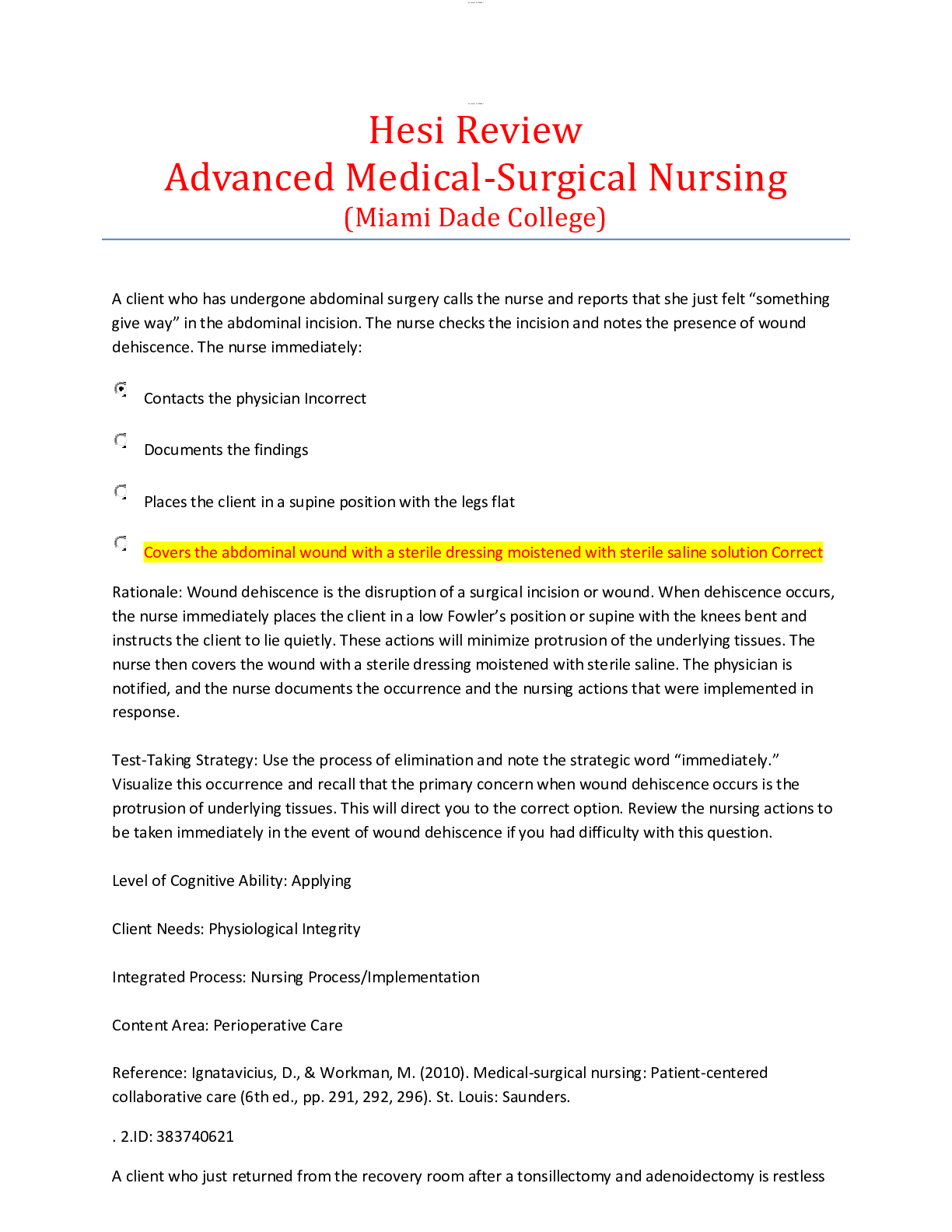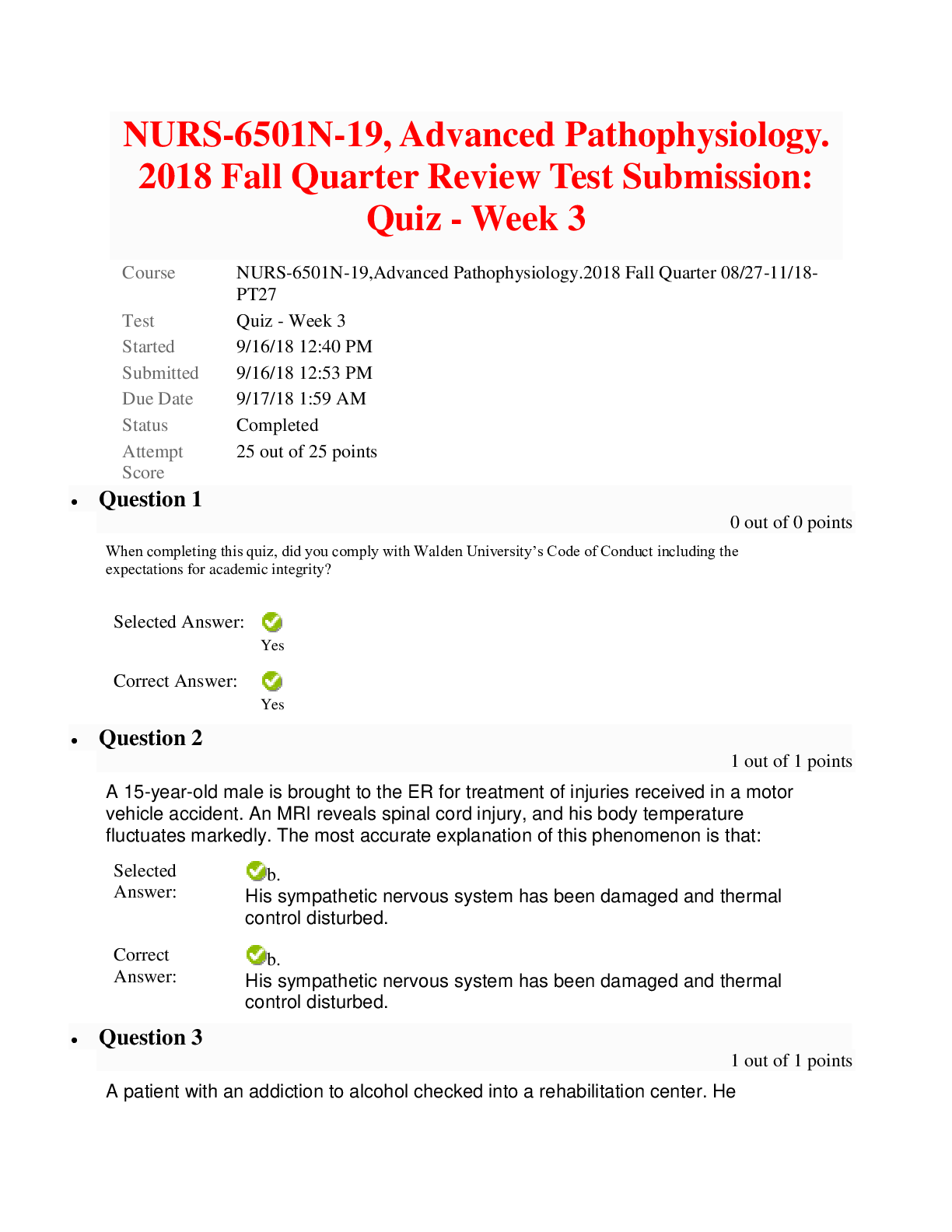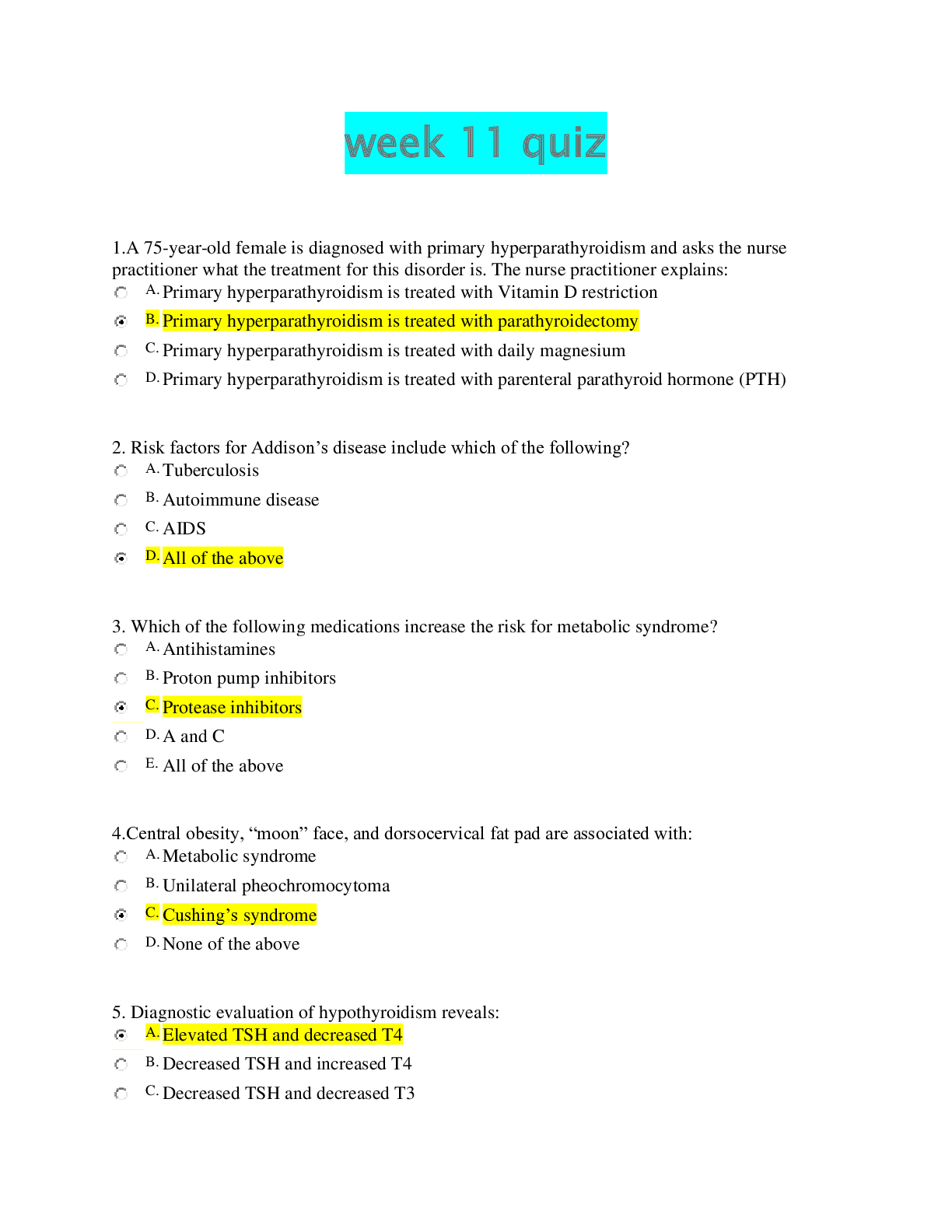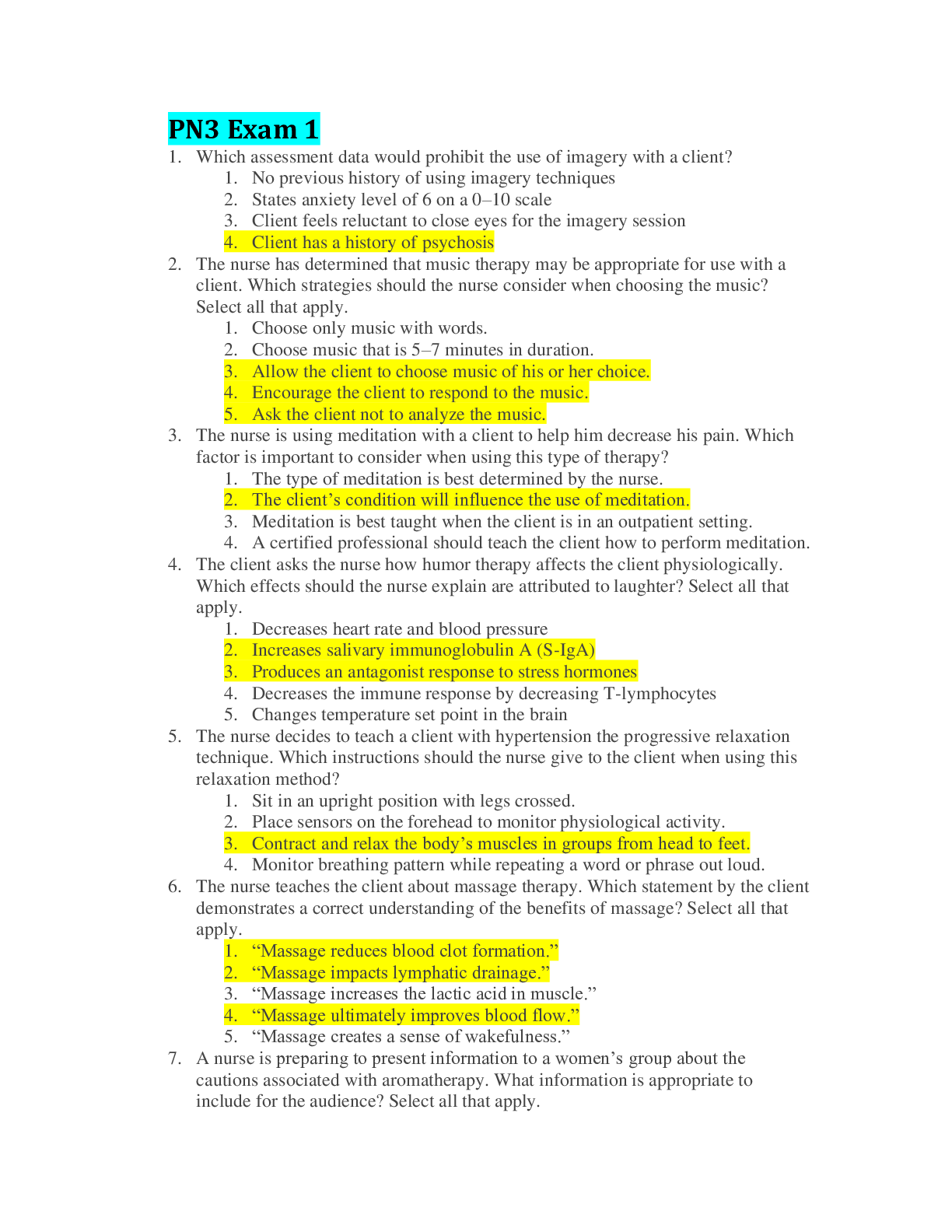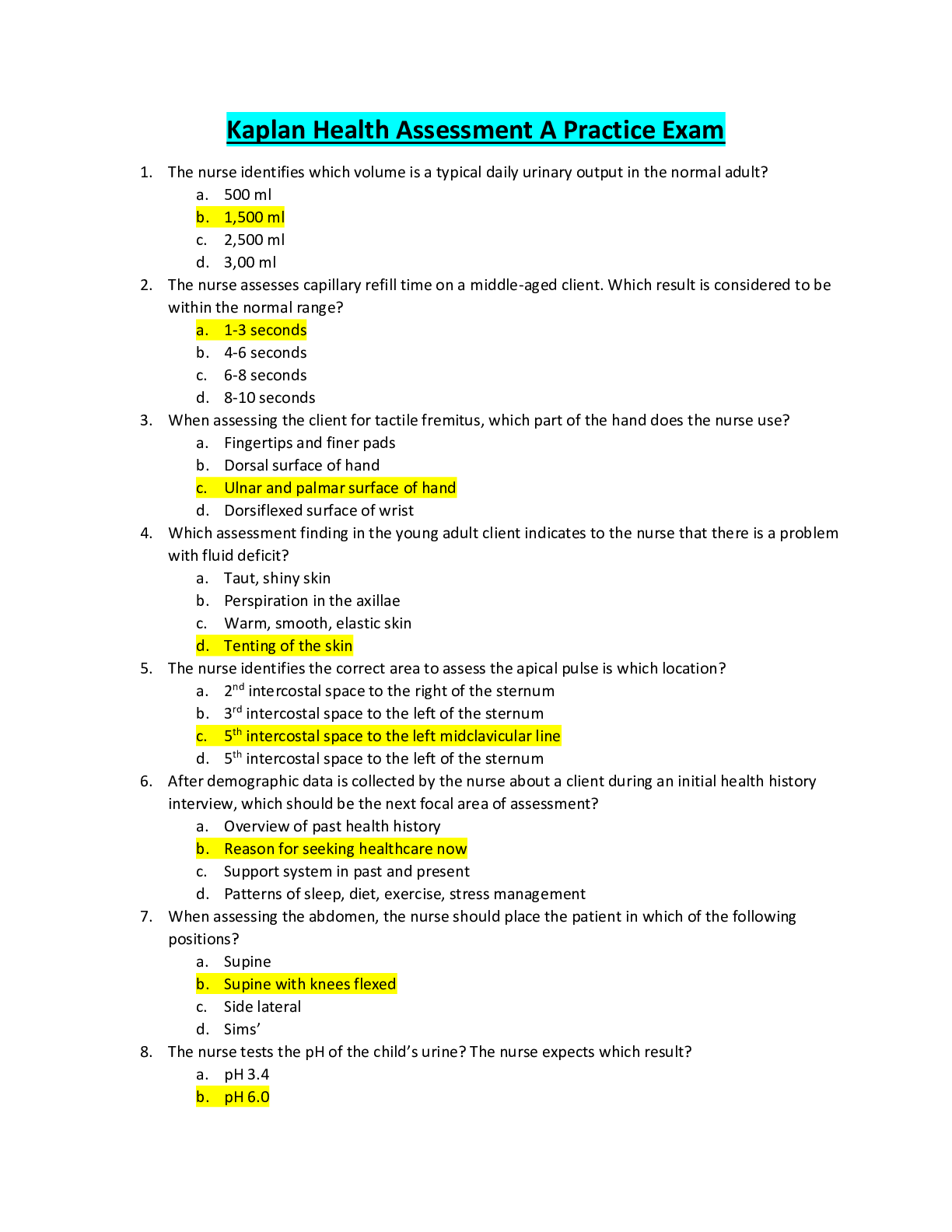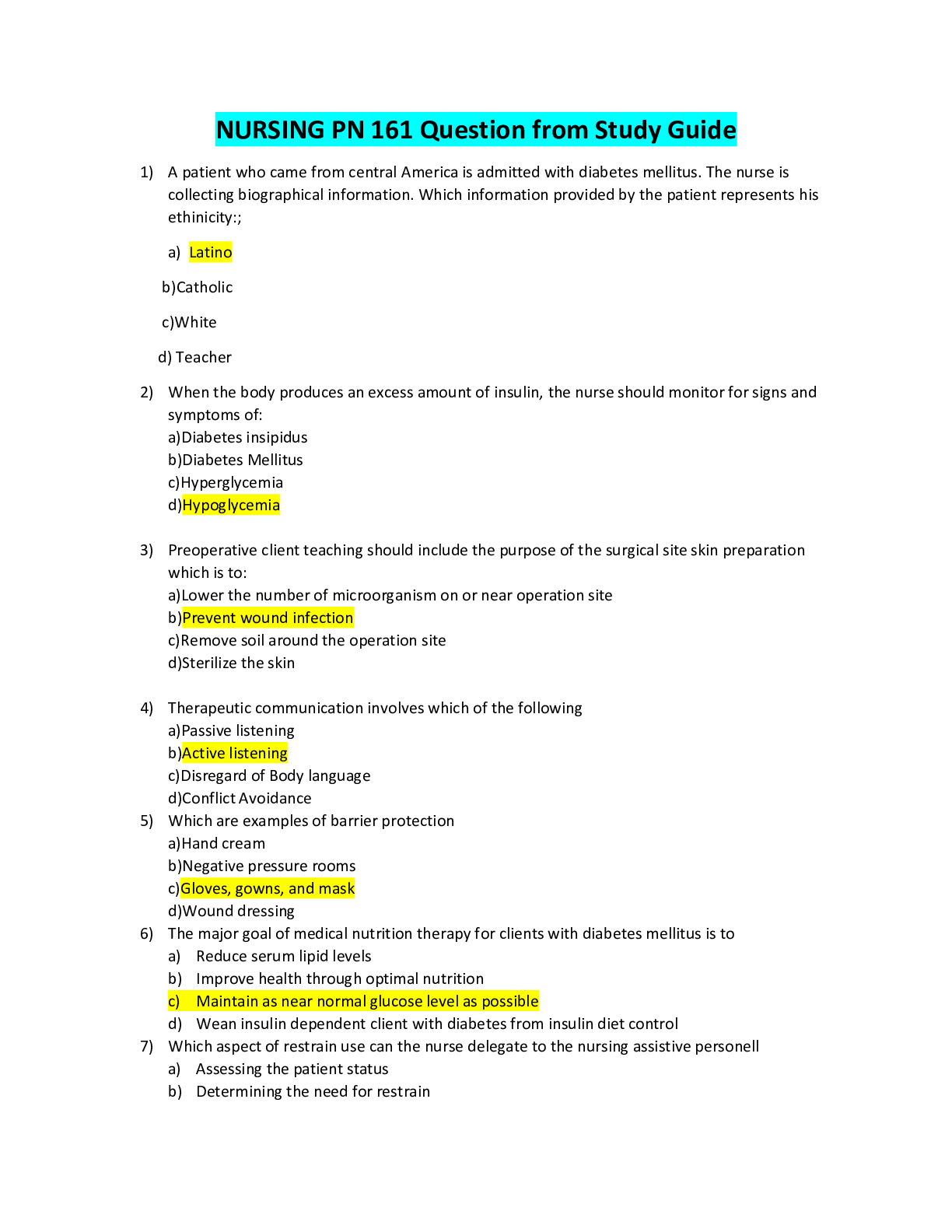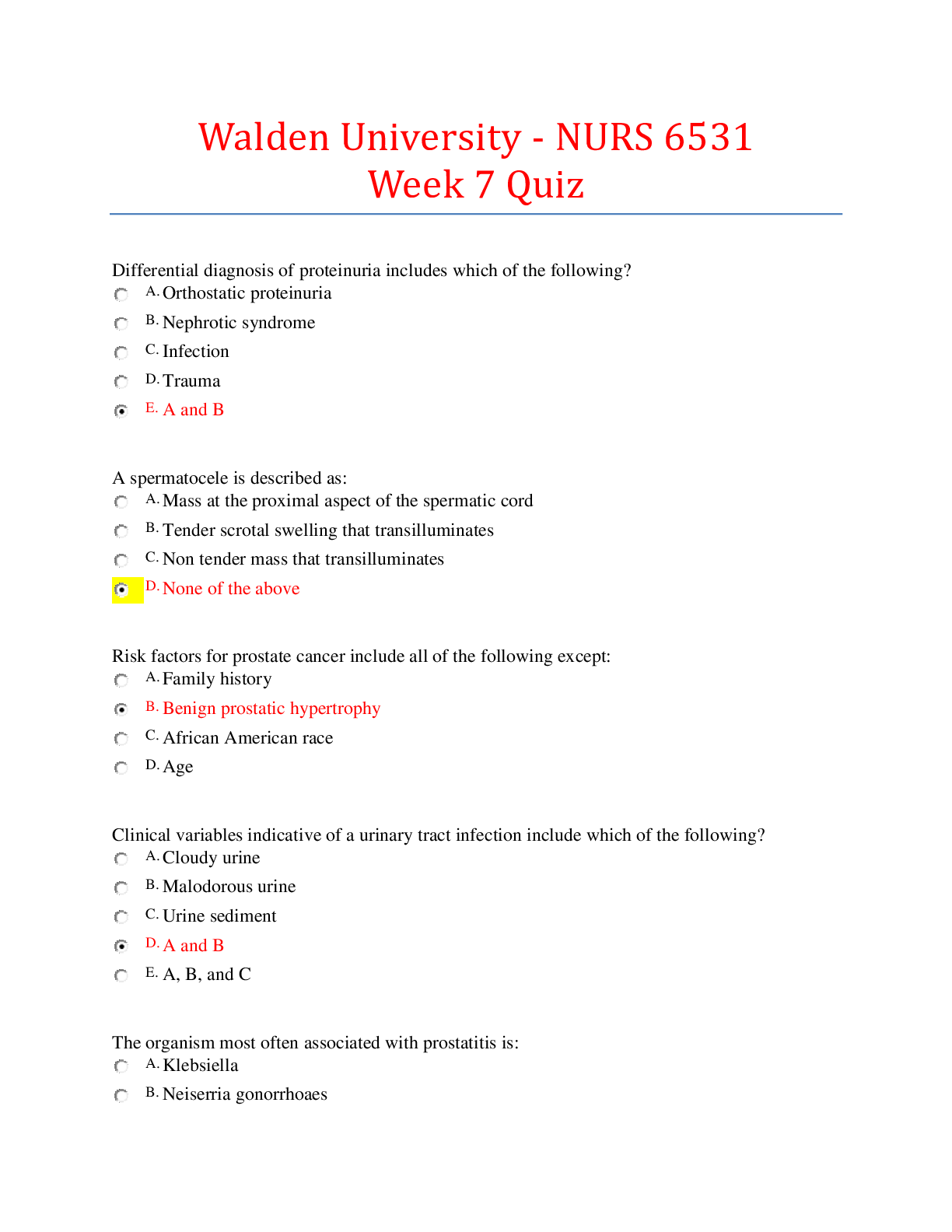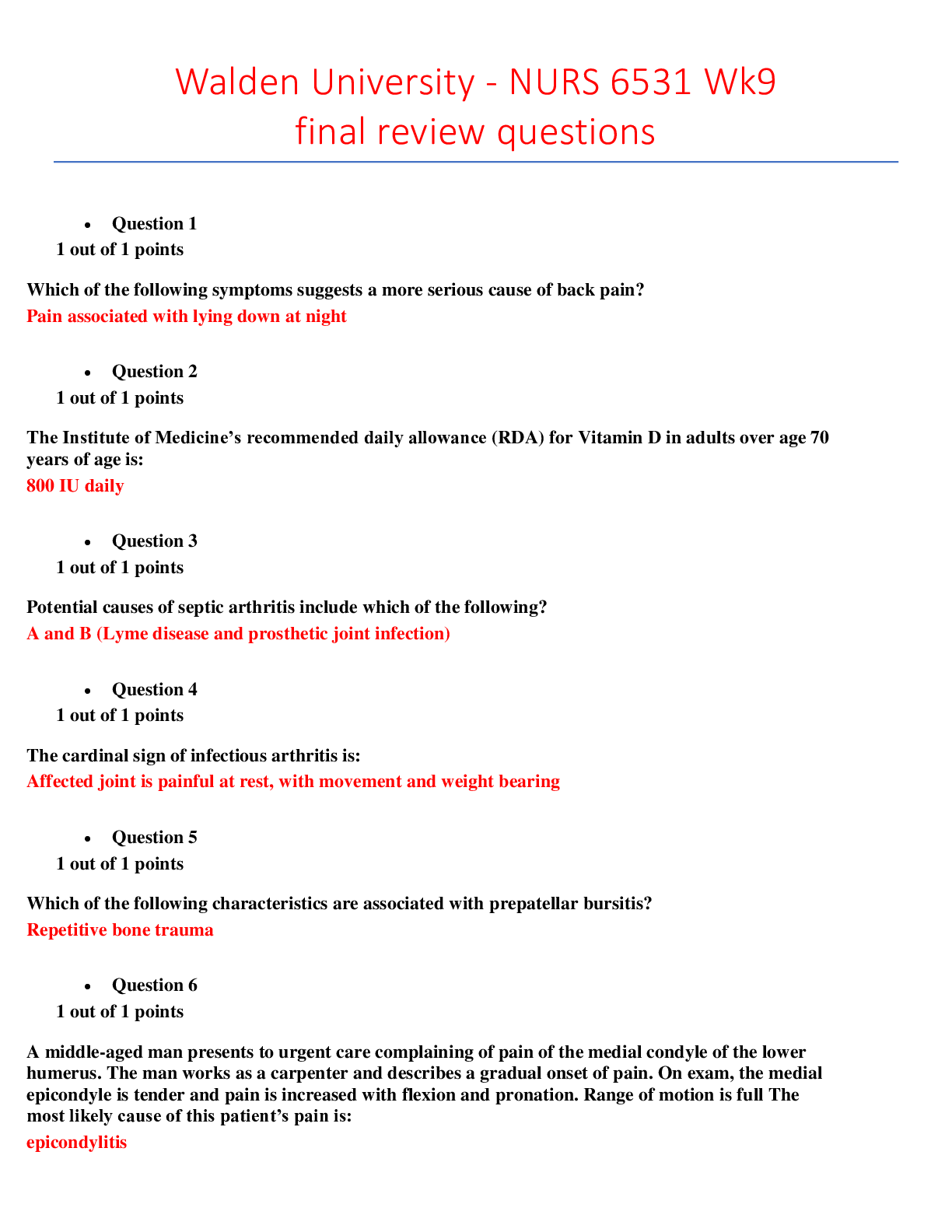*NURSING > QUESTIONS & ANSWERS > Walden University - NURS 6531 Week 6 Quiz. All Answers 100%. (All)
Walden University - NURS 6531 Week 6 Quiz. All Answers 100%.
Document Content and Description Below
question 1 Which of the following disorders is associated with obesity, diabetes, and hyperlipidemia? A. Autoimmune hepatitis B. Nonalcoholic steatohepatitis C. Hemochromatosis D. Wil... son’s disease Question 2 Which of the following is considered a functional gastrointestinal disorder? A. Crohn’s disease B. Ulcerative colitis C. Constipation D. Irritable bowel syndrome Question 3 Which of the following describes a third degree internal hemorrhoid? A. Bulge, but not prolapsed through anal orifice B. Prolapsed during defecation requiring manual reinsertion C. Prolapsed during defecation and reduce spontaneously D. Less likely to bleed, but positive edema and pain Question 4 A 65-year-old female with a past medical history of hypertension, hyperlipidemia, and polymyalgia rheumatica presents to urgent care with new onset left lower quadrant pain. Her current medications include omeprazole 20 milligrams po daily, lisinopril 20 milligrams po daily, simvastatin 20 milligrams po daily, and prednisone 12 milligrams po daily. The nurse practitioner suspects acute diverticulitis and possibly an abscess. The most appropriate diagnostic test for this patient at this time is: A. CBC/diff B. Erythrocyte sedimentation rate C. Abdominal ultrasound D. CT scan Question 5 A 58-year-old man is diagnosed with Barrett’s esophagus after an endoscopy. He has no known allergies. Which of the following medications is MOST appropriate to treat this patient’s disorder? A. Omeprazole B. Ranitidine C. An antacid D. None of the above Question 6 Risk factor(s) associated with inflammatory bowel disease include: A. Smoking B. Alcohol ingestion C. Greek heritage D. None of the above Question 7 Treatment of H.pylori includes which of the following? A. Proton pump inhibitor B. Antibiotic therapy C. Bismuth subsalicylate D. A and B E. A, B, and C Question 8 An AST that is more than twice the level of ALT is suggestive of: A. A hemolytic disorder B. Cholestasis C. Infiltrative liver disease D. Alcoholic liver injury Question 9 Pruritus ani is related to A. Corynebacterium minutissimum B. Pinworm infestation C. Stahphylococcus aureus D. B only E. A, B, and C Question 10 An 83-year-old female presents to the office complaining of diarrhea for several days. She explains she has even had fecal incontinence one time. She describes loose stools 3–4 times a day for several weeks and denies fever, chills, pain, recent antibiotic use. The history suggests that the patient has: A. Acute diarrhea B. Chronic diarrhea C. Irritable bowel D. Functional bowel disease [Show More]
Last updated: 2 years ago
Preview 1 out of 3 pages

Buy this document to get the full access instantly
Instant Download Access after purchase
Buy NowInstant download
We Accept:

Reviews( 0 )
$4.00
Can't find what you want? Try our AI powered Search
Document information
Connected school, study & course
About the document
Uploaded On
Aug 09, 2020
Number of pages
3
Written in
Additional information
This document has been written for:
Uploaded
Aug 09, 2020
Downloads
0
Views
98



